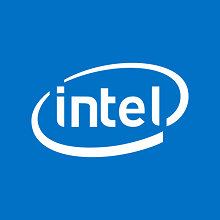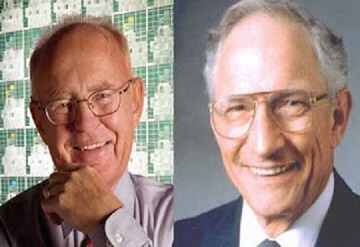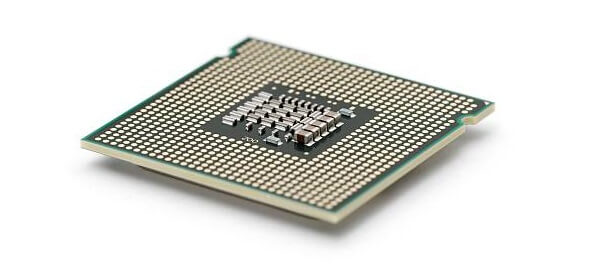Intel Company
The American company Intel, or the full name Intel Corporation, manufactures semiconductor computer circuits. The company's main office is in Santa Clara, California. The name of the business is derived from "integrated electronics." How did Intel begin?American engineers Gordon Moore and Robert Noyce created Intel in July 1968. Intel began operations with $2.5 million in finance secured by Arthur Rock, an American investor who originated the phrase "venture capitalist," in contrast to the traditional Silicon Valley start-up company with its legendary roots in a young founder's garage. The founders of Intel were professional, middle-aged engineers with solid reputations. 
When Noyce was manager of Fairchild Semiconductor, a part of Fairchild Camera and Instrument, he invented the silicon integrated circuit in 1959. Moore oversaw development and research at Fairchild Semiconductor. Noyce and Moore hired more Fairchild workers shortly after launching Intel, including American entrepreneur Andrew Grove, who was born in Hungary. Over the course of the initial three decades of the business's existence, Noyce, Moore, and Grove were the company's chairman and CEO. What were the initial products of Intel?The earliest items produced by Intel included memory chips, including the 1101, the very first metal oxide semiconductor in history, which had poor sales. The 1103, a one-kilobit dynamic random-access memory (DRAM) chip, was its brother and was the first device to successfully store a sizable quantity of data. In order to replace the fundamental memory system in its computers, Honeywell Incorporated, an American technology business, made its first purchase of it in 1970. DRAMs swiftly replaced core memory as the default memory option in computers all around the world because they were less expensive and consumed lesser energy. In 1971, Intel went public as a result of the success of its DRAM technology. In that same year, Intel released the EPROM microchip, which was the business's most lucrative product line up until 1985. Under a contract with the Japanese calculator manufacturer Nippon Calculating Machine Corporation, Intel engineers Ted Hoff, Federico Faggin, and Stan Mazor created a four-bit microchip as well as the first only one chip microprocessors, the 4004, allowing Intel to keep all intellectual property rights. Early efforts by Intel weren't always effective. Management made the decision to acquire Microma in 1972 in order to penetrate the expanding digital watch industry. However, Intel lacked any true market knowledge and lost $15 million when it sold the wristwatch business in 1978. By 1984, Intel's market share had dropped to 1.3 percent from 82.9 percent in 1974 as a result of the emergence of international semiconductor firms. By that point, however, Intel had transitioned from memory chips and was now focused solely on its microchip business. In 1972, the company released the 8008, an eight-bit CPU (Central processing unit); two years later, the 8080, which was way more efficient than the 8008; and in 1978, the company created the 8086, a 16-bit microprocessor. International Business Machines (IBM), a computer company based in the United States, selected Intel's 16-bit 8088 as the CPU for IBM's initial bulk-produced personal computer in 1981 (PC). Additionally, Intel sold its microchips to many other corporations who created PC "clones" that worked with IBM's hardware. The IBM PC and its knockoffs sparked a surge in interest in desktops and compact pcs. Microsoft Corporation, a tiny business in Redmond, Washington, was contracted by IBM to develop the disc operating system (DOS) for its home pc. The Windows operating system was eventually provided by Microsoft to IBM PCs, which were later called "Wintel" computers and have since dominated the market due to their combination of Windows computers and Intel Chipsets. Among the several microprocessors Intel has created, the 80386-a 32-bit chip introduced in 1985-may be the most significant since it marked the beginning of the company's dedication to making all subsequent microprocessors backward-compatible with earlier CPUs. Then, PC customers and application developers could feel at ease knowing that software designed for earlier Intel systems would function just as effectively on recent versions. What is Pentium Microprocessor?
With the release of the Pentium microchip in 1993, Intel abandoned its numerically based product naming practices for its microprocessor trademarked names. With the use of parallel, or superscalar, computing, the Pentium became the first Intel processor for personal computers, greatly enhancing its speed. Compared to the 1.2 million transistors in the 80486 it replaced, it had 3.1 million transistors. The significantly faster Pentium CPU, when coupled with Microsoft's Windows 3.x os, helped propel a considerable increase in the PC industry. The more powerful Pentium computers allowed consumers to utilize PCs for multimedia graphics programs like games that required greater computing power, even while companies continued to purchase the majority of PCs. In order to persuade customers to update existing Computers, Intel's business model depends upon creating new microchips noticeably quicker than older ones. Making chips with a lot of many transistors in each one was one approach to do this. For instance, the initial IBM PC's 8088 chip had 29,000 transistors, the 80386 chip debuted four years later had 275,000 transistors, and the Core 2 Quad chip debuted in 2008 had more than 800,000,000 transistors. In 1991, Intel started funding computer commercials as long as they featured the company's "Intel inside" badge to raise customer brand recognition. In accordance with the collaborative partnership, Intel set aside a percentage of the amount that every computer company invested each year in Intel chips, and from that money, Intel funded half of the expense of that company's television and print promotions for the entire year. Despite the initiative directly costing Intel hundreds of thousands of dollars annually, it achieved its goal of making Intel a well-known big brand. Even the renowned technological brilliance of Intel has its share of errors. Its biggest blunder was the so-called "Pentium fault," which occurred when a small portion of the 3.1 million transistors in the Pentium CPU executed division improperly. After the product's 1993 launch, engineers found the issue, but they chose to remain silent and repair it in subsequent iterations of the chip. What are the products Intel develops other than processor making?Midway through the 1990s, Intel had grown outside the semiconductor industry. Prominent PC manufacturers were capable to develop and produce Intel-based systems for respective markets, including IBM and Hewlett-Packard. Meanwhile, Intel started designing and manufacturing "motherboards" that housed all the critical components of the computer, including networking and graphical processors, because it expected other, relatively small computer manufacturers to promote Intel's processor. Every PC, with the exception of Apple Inc.'s Macintosh, which had been running Motorola CPUs since 1984, was equipped by the end of the century with Intel and similar processors firms like AMD. Craig Barrett, who took over for Grove as Intel CEO in 1998, was successful in bridging the barrier. When he revealed that future Apple PCs will employ Intel CPUs in 2005, Apple CEO Steven Jobs stunned the industry. Therefore, Intel and Intel-compatible microchips can be found in almost all Computer, and the firm controlled the CPU industry in the early 21st century, with the exception of a few high-performance computers, known as servers and mainframes.
Next TopicCoca Cola Company
|
 For Videos Join Our Youtube Channel: Join Now
For Videos Join Our Youtube Channel: Join Now
Feedback
- Send your Feedback to [email protected]
Help Others, Please Share










